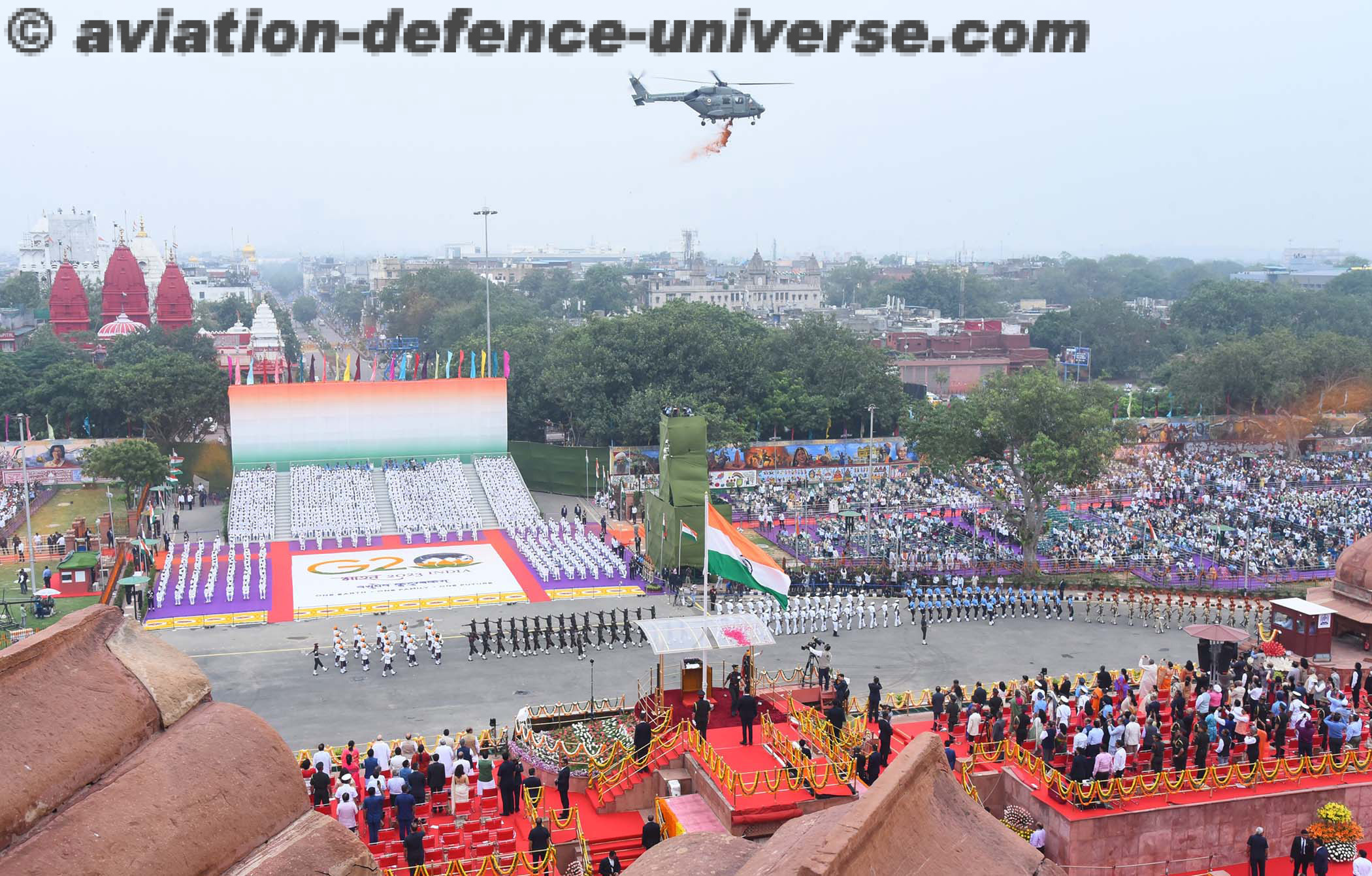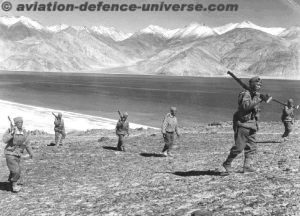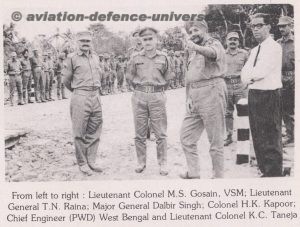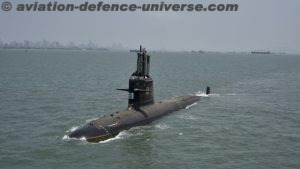
By Maj Gen (Dr.) Ashok Kumar, VSM (Retired)
New Delhi. 23 August 2023. 76 years of India’s independence from British rule, it’s time to take stock of our challenges as well as the opportunities as existing on the world stage, more so , as this century is going to be India’s century wherein India will not only become one of the top three economies of the world but will also become a global power in the domain of defence capability.

Strategic emergence encompasses various components in the formation of a nation state but a detailed coverage of the defence perspective is needed as Defence forces are the last resort in the hands of the Government. It will be interesting to have a close look to the events from India gaining independence on 15 Aug 47 and bring the events right up to the current times wherein a major significant Malabar exercise has been concluded by the navies of India, Australia, USA and Japan recently signifying the emergence of India on the world stage.
Let’s go back to India gaining independence on 15 Aug 1947 wherein two countries were created by British Parliament Act, India and Pakistan. Pakistan was further divided into two geographically separated entities in the form of West Pakistan and East Pakistan. Defence forces were also distributed between the two nations. There were more than 500 princely states who were given the option of either joining India or Pakistan. There was also no provision of these states being attacked for forceful occupation till the time they are in the process of making up their mind.
Though the geographic area of Pakistan was far less as compared to India, in fact even less than 25% , Pakistan got a much higher share of the defence forces at the time of partition which was almost close to one third. Within just two months of gaining independence, Pakistan attacked the princely state of K&K k 22 Oct 1947 and reached on the outskirts of Srinagar. It was at this stage that Maharaja Hari Singh signed the instrument of accession on 27th Oct 1947 making the entire state of J&K as an inalienable part of india. This was followed by landing of Indian Army in Srinagar and the first war of india post independence commenced. Though this war continued for more than a year having commenced in Oct 47 and was stopped by a ceasefire agreement in Jan 1949, Indian defence forces were able to capture 2/3rd of state of J&K while 1/3rd remained with Pakistan as POK. While we did reasonably well in this war including some unparalleled heroic actions, we fell short of capturing back the entire J&K even within a year of war.
 While the experiences of this war should have resulted in force resurgence, logistics capability development and border infrastructure creation, these things were relegated to lower priority as the nation was busy in its developmental activities. It was hoped that the diplomatic tool was good enough to resolve border issues. This had also resulted in border guarding arrangements not being ‘put in place’ and the state police forces were responsible for the border guarding. This resulted in the fiasco of 1962 war which not only humiliated the nation but also the defence forces. Strategic emergence of the defence forces became inevitable at this stage and this war can be touted as a watershed moment for the Indian defence forces.
While the experiences of this war should have resulted in force resurgence, logistics capability development and border infrastructure creation, these things were relegated to lower priority as the nation was busy in its developmental activities. It was hoped that the diplomatic tool was good enough to resolve border issues. This had also resulted in border guarding arrangements not being ‘put in place’ and the state police forces were responsible for the border guarding. This resulted in the fiasco of 1962 war which not only humiliated the nation but also the defence forces. Strategic emergence of the defence forces became inevitable at this stage and this war can be touted as a watershed moment for the Indian defence forces.
Force accretion and capacity creation started in a big way including some effort on structuring of border guarding troops. Pakistan assumed India being that of 1947-48 war capacity & weakened by 1962 war and decided to attack India in 1965 making another attempt to retake the state of J&K as it was emboldened by modern acquisitions of defence equipment. It started the war initially in Rann of Kachchh but later focused on the state of J&K across CFL.
 It was not knowing that Indian defence forces are changed entity now and a major strategic shift has taken place. India not only checked the Pakistani attack in the state of J&K but also took the offensive across the IB in the state of Punjab. When this war stopped, india had reasonable gains both across IB and CFL areas including capture of Hajipur pass. Entire gains/losses were neutralized across IB as well as CFL during the Tashkent agreement of 1966. There was only one change and that was the recognition of Indian Defence Forces as a potent force.. Strategic emergence of Indian defence forces was recognised as it won the 1965 war despite fighting with inferior equipment as compared to Pakistan.
It was not knowing that Indian defence forces are changed entity now and a major strategic shift has taken place. India not only checked the Pakistani attack in the state of J&K but also took the offensive across the IB in the state of Punjab. When this war stopped, india had reasonable gains both across IB and CFL areas including capture of Hajipur pass. Entire gains/losses were neutralized across IB as well as CFL during the Tashkent agreement of 1966. There was only one change and that was the recognition of Indian Defence Forces as a potent force.. Strategic emergence of Indian defence forces was recognised as it won the 1965 war despite fighting with inferior equipment as compared to Pakistan.
Like Pakistan underestimated India in 1965, China did the same in 1967 in Sikkim while it had conflict with Indian troops at Nathu La and Cho La passes. It was beaten back in detail and the defeat of 1962 war was somewhat avenged. Indian defence forces had become the strategic asset of the nation capable of beating back of its adversaries.
Then came the 1971 war during which Pakistan was dismembered and a new nation Bangladesh was created from East Pakistan. In addition to the unprecedented victory on the Eastern front, India made some gains across IB and CFL on the Western front. The capture of more than 93,000 troops in a war of merely 16 days along with Pakistani surrender was unparalleled in the history of any world military power ever. Indian defence forces were at their best at this time and the world acknowledged this.
 There have been many other incidents to include capture of Siachen glacier in 1984, checkmating Chinese across Samdurang Chu in 1987, defeating Pakistan in 1999 Kargil War even without crossing LOC and checkmating China in Doklam in 2017. In addition to facing its adversaries and acquitting itself well, it has conducted operations outside of own geographical boundaries, be it in Sri Lanka or in Maldives.
There have been many other incidents to include capture of Siachen glacier in 1984, checkmating Chinese across Samdurang Chu in 1987, defeating Pakistan in 1999 Kargil War even without crossing LOC and checkmating China in Doklam in 2017. In addition to facing its adversaries and acquitting itself well, it has conducted operations outside of own geographical boundaries, be it in Sri Lanka or in Maldives.
India is currently facing the Chinese in Eastern Ladakh on the LAC since 2020 and has not winked despite accretion of the forces from the both sides to include Army, Navy and AF. Indian forces to include Army, Navy and AF are conducting multiple exercises for better interoperability. Majority countries of the world look at Indian defence forces with professional respect and see them as the most capable force to deliver results even in adverse circumstances.
A stage has come when the USA , the only super power has also started looking towards India for its strategic interest, clearly indicating that India’s strategic emergence at the global stage has been cemented for times to come. India has to continuously work for indigenisation of the defence equipment, integration of the three services in form of suitably structured Theatre commands and increased focus on border infrastructure development. These actions will ensure that strategic emergence of the forces on the global stage continues for times to come.
(Maj Gen Ashok Kumar, VSM (Retd) is a Kargil war veteran and defence analyst. He is visiting fellow of CLAWS and specialises on neighbouring countries with special focus on China. The views in the article are solely the author’s. He can be contacted at editor.adu@gmail.com).
































































































































